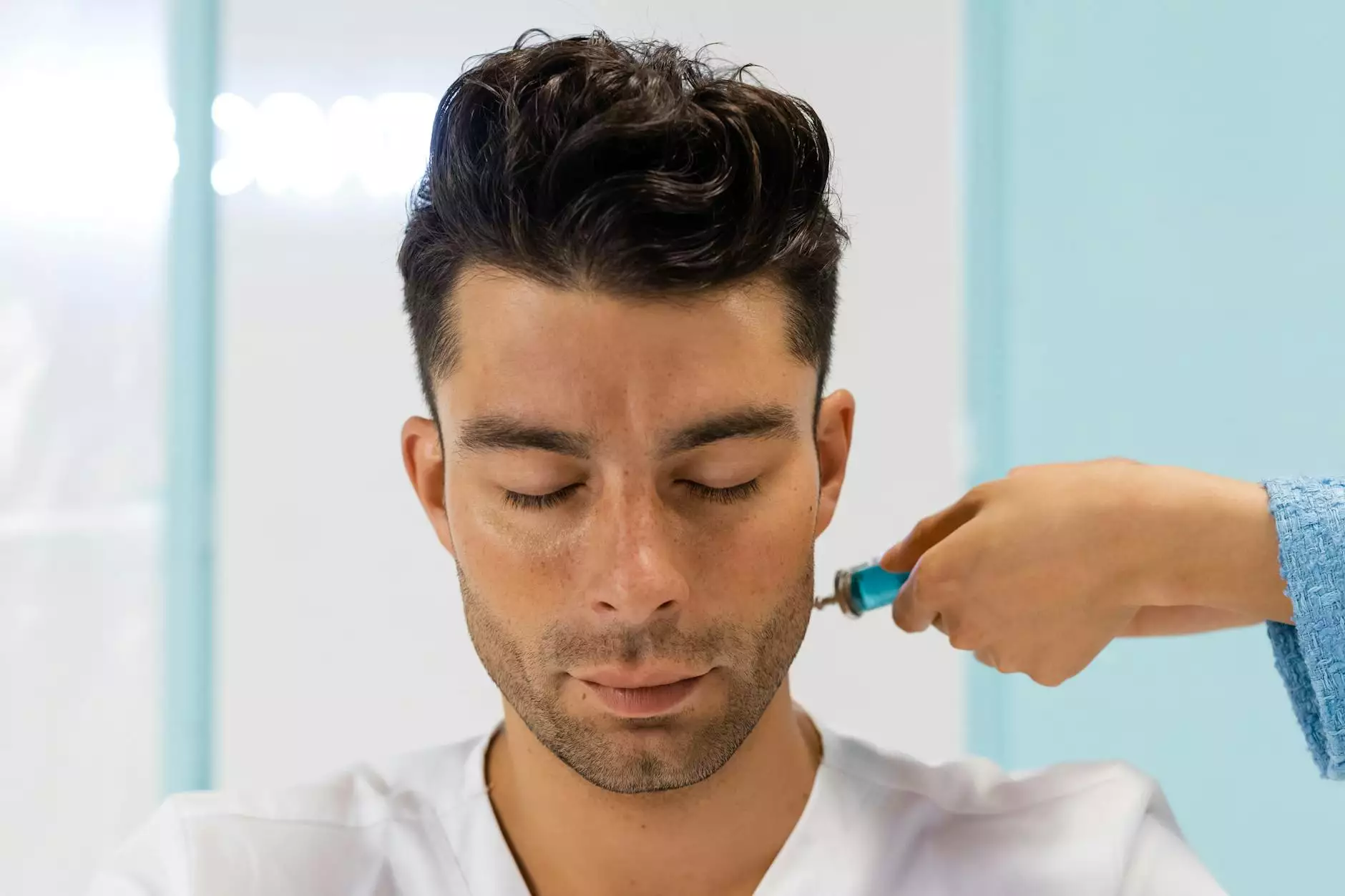Understanding Shoulder Pain: When It Hurts to Rotate Your Shoulder

Shoulder pain is one of the most common musculoskeletal issues facing individuals today, often leading to discomfort, frustration, and a reduced quality of life. If you find yourself saying, "it hurts to rotate shoulder", you are not alone. Millions of people experience this sensation at some point in their lives. Understanding the causes, symptoms, and treatment options available can drastically improve your situation. In this article, we will delve into the anatomy of the shoulder, potential causes of pain, and effective solutions, all while focusing on ways to enhance your overall health and well-being.
The Anatomy of the Shoulder
The shoulder is a complex structure that consists of:
- Bone: The humerus (upper arm bone), scapula (shoulder blade), and clavicle (collarbone).
- Muscles: A group of four muscles known as the rotator cuff, which stabilizes and enables shoulder movement.
- Tendons: Tough cords that connect muscles to bones.
- Ligaments: These connect bones to other bones and add stability to the joint.
- Bursae: Small, fluid-filled sacs that reduce friction between the moving parts of the joint.
Understanding this anatomy is crucial when trying to pinpoint the source of pain when it hurts to rotate your shoulder. Whether from injury, condition, or misuse, identifying the problem is the first step toward recovery.
Common Causes of Shoulder Pain
When you experience discomfort in your shoulder, especially during rotation, several factors could be at play:
1. Rotator Cuff Injuries
The rotator cuff is essential for shoulder movement and stability. Tears or strains in this area can lead to considerable pain, particularly when attempting to rotate your arm. This often happens due to:
- Repetitive motions, often seen in athletes.
- Age-related degeneration.
- Sudden injuries from falls or heavy lifting.
2. Shoulder Bursitis
Bursitis refers to the inflammation of the bursae, causing pain in the shoulder, especially when lifting your arm or rotating it. This condition can develop from overuse or prolonged pressure on the shoulder joint.
3. Tendonitis
Similar to bursitis, tendonitis involves inflammation but focuses on the tendons that support the rotator cuff. Too much repetitive motion, poor posture, or aging can lead to this condition.
4. Frozen Shoulder (Adhesive Capsulitis)
This condition is characterized by stiffness and pain in the shoulder joint. It is often triggered by prolonged immobility or injury, making it particularly painful when it hurts to rotate the shoulder.
5. Arthritis
Arthritis in the shoulder can cause painful swelling and decreased mobility, causing significant discomfort when rotating the shoulder. Osteoarthritis and rheumatoid arthritis are the most common types affecting the shoulder joint.
6. Shoulder Dislocation or Subluxation
A dislocated shoulder happens when the humerus pops out of the shoulder socket. This injury is often accompanied by severe pain and difficulty rotating the shoulder. Even a partial dislocation (subluxation) can lead to similar issues.
7. Other Causes
Other less common but serious conditions like fractures or systemic diseases can also result in shoulder pain. If such painful conditions persist or worsen, it is crucial to seek professional medical advice.
Symptoms of Shoulder Pain
When it hurts to rotate your shoulder, you might experience a range of symptoms, including:
- Pain: May be constant or intermittent and can be sharp or dull.
- Stiffness: Difficulty in moving the shoulder through its full range of motion.
- Swelling: Inflammation can cause visible swelling around the shoulder joint.
- Weakness: You may notice a decrease in strength when attempting to lift or rotate your arm.
Diagnosis and Assessment
To adequately address the issue of shoulder pain, a thorough assessment is necessary. Health professionals may utilize:
- Physical Examination: Assessing movement, pain levels, and muscle strength.
- X-rays: Imaging to check for fractures or degenerative changes.
- MRI or Ultrasound: To evaluate soft tissue injuries, such as tears in the rotator cuff or inflammation of the bursa.
Receiving an accurate diagnosis helps in forming an effective treatment plan tailored to your specific condition.
Treatment Options for Shoulder Pain
Once you have identified the cause of your shoulder pain, especially if it hurts to rotate your shoulder, treatments can vary widely:
1. Rest and Activity Modification
For mild cases, simply allowing your shoulder to rest while avoiding activities that exacerbate the pain can be beneficial. Understand the importance of listening to your body and taking time to heal.
2. Physical Therapy
Engaging in targeted physical therapy can help strengthen the muscles surrounding your shoulder joint and improve flexibility. A physical therapist will guide you through a personalized routine aimed at restoring function and easing pain.
3. Medications
Over-the-counter pain relief options like NSAIDs (non-steroidal anti-inflammatory drugs) can help manage pain and reduce inflammation. Consult with a healthcare provider for appropriate recommendations.
4. Injections
For more severe cases, corticosteroid injections can alleviate inflammation and pain in the shoulder joint, providing temporary relief that allows for rehabilitation exercises to commence.
5. Surgical Options
In cases of severe rotator cuff tears, impingement, or other conditions that do not respond to conservative treatments, surgical intervention may be necessary. Procedures could include:
- Arthroscopic Surgery: Minimally invasive procedure to repair torn rotator cuff or remove inflamed tissue.
- Shoulder Replacement Surgery: Performed when arthritis or other degenerative conditions severely damage the shoulder joint.
Preventive Measures for Shoulder Health
Once you've recovered from shoulder pain, implementing preventive measures is crucial to avoid future issues:
- Strength Training: Engage in regular strength training exercises to support and strengthen shoulder muscles.
- Staying Active: Regular physical activity promotes flexibility and strength.
- Proper Ergonomics: Whether at a desk job or during physical activity, ensure your workspace and techniques are conducive to shoulder health.
- Warm-up Exercises: Always warm up before engaging in any physical activity, particularly those involving the upper body.
When to Seek Professional Help
If you are experiencing persistent symptoms that indicate it hurts to rotate your shoulder, don’t hesitate to seek professional advice. Early intervention can make a significant difference in recovery times and the overall outcome.
Conclusion
The journey to understanding your shoulder pain can feel overwhelming but knowing that it hurts to rotate your shoulder is a common experience is the first step. From understanding the anatomy and causes of your pain to exploring treatment options and preventive measures, you are now equipped with valuable knowledge that can lead you toward recovery. Remember, maintaining your health and well-being is a lifelong endeavor, and proactive measures can ensure that you live an active, fulfilling life free from pain.
For expert advice, further information, and resources, consider visiting iaom-us.com, where health and education intersect with solutions tailored to your chiropractic needs.









